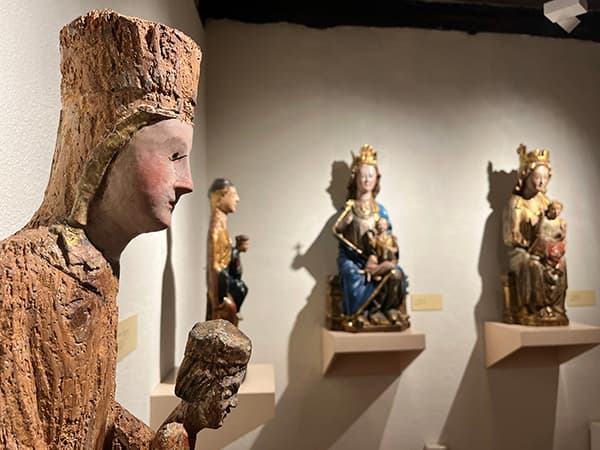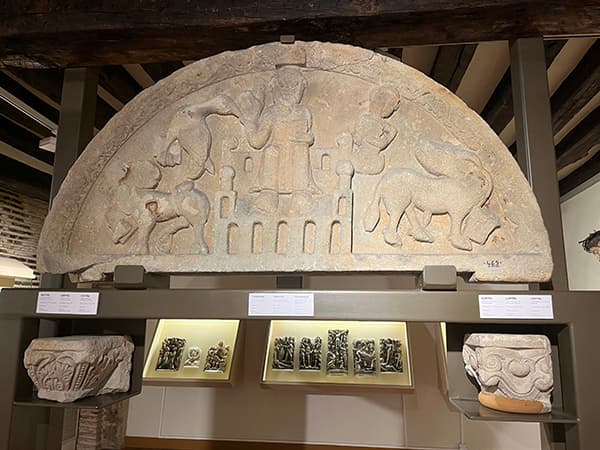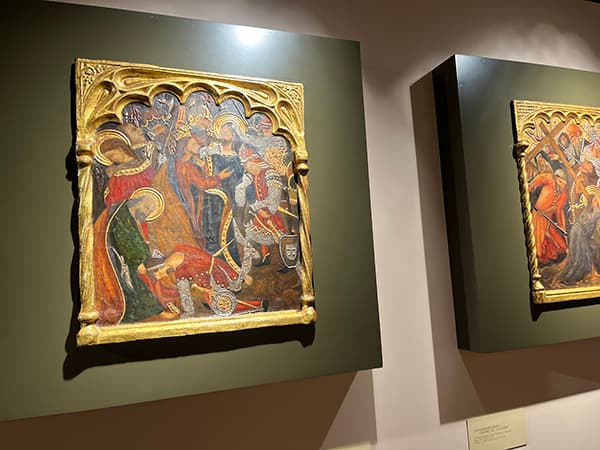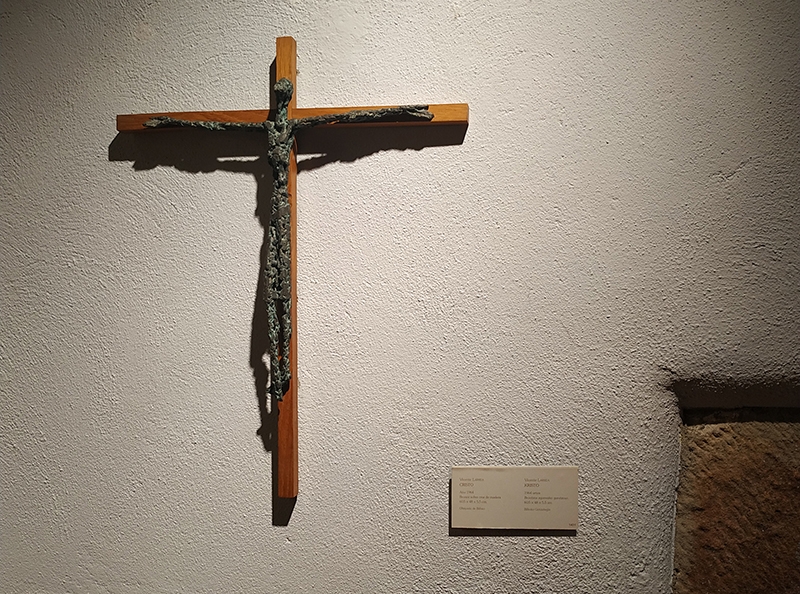What to see at the Museum
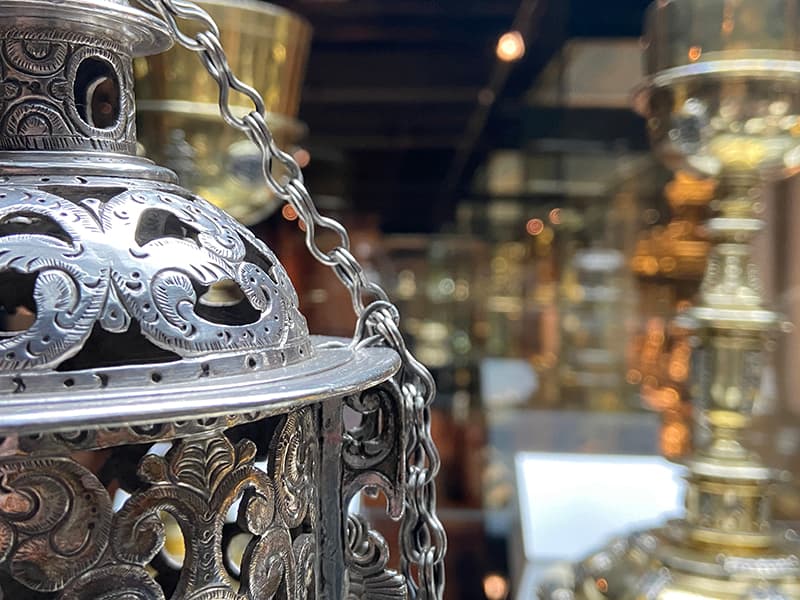
A Museum with history
The Museum of Sacred Art was founded in 1961.
Its aim was – and still is – to conserve, restore, study and disseminate the religious heritage of the Diocese of Bilbao.
It has a permanent exhibition of more than 500 pieces, although it also has an extensive and growing collection of works of art from the churches of Bizkaia and private donations.
The Museum also takes care of all the works of art scattered throughout Biscay. Restorations, changes of location of pieces, transformations of spaces… are managed from the Museum. An instrument for the conservation of our cultural heritage.
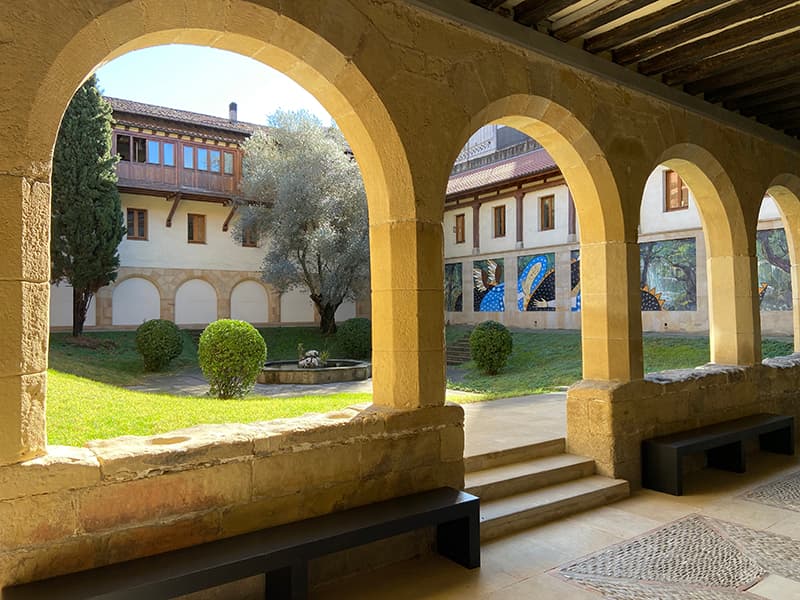
The building
The Museum is located in the convent of La Encarnación. Founded in 1514 by Dominican nuns, it was the first women’s convent in Bilbao.
Its austere facade belies the relaxing interior cloister from which the exhibition rooms are accessed.
It forms part of the convent complex together with the adjoining church, and its facilities have been used for various purposes (teaching centre, barracks, hospital…), until its conversion in 1995 into the Bilbao Museum of Sacred Art.

The collection
A journey through the art of Bizkaia through more than 500 pieces: sculpture, painting, gold and silver work, vestments… From the Romanesque period to the present day,
Works of art that were made in Bizkaia, or outside it but destined for its temples.
It is the most important collection of art specifically from Bizkaia.
On the other hand, these works of art were made expressly for the purpose of serving the Christian liturgy. In other words, they are the most important manifestation of the faith of the people of Biscay over eight centuries.
And this allows us to get closer to the mentality of other times. Through the evolution of forms and tastes, the greater or lesser presence of one or other typologies and one or other iconographies… we can also follow the pulse of the people.
You can see our collection here:
You can download our catalogue in PDF:
Collection catalogue
(Download PDF 4Mb)
My favorite work
Tell us which of the Museum’s works you liked the most.
Instructions: Write a text (350 keystrokes maximum) and send an image (JPG format, minimum size 800 x 600 pixels).
By sending this image you expressly authorise its use/inclusion on the website and social networks of the Museum of Sacred Art.
You can send us your comment and your photo here
Sala Andra Mari
En una sola habitación puedo ver la transformación de la Virgen hierática, ausente, frontal, que sólo sirve de trono a su Hijo, en una verdadera madre que juguetea con el niño Jesús. Del frío románico al cálido gótico. Da que pensar.
Tímpano de Santurtzi
La verdad es que es muy modesto y tosco pero tiene un encanto naif que lo hace tierno. Me encanta el trono.
Tablas catalanas
Por un momento he creído estar en un museo de mi Cataluña ante unas tablas de Bernat Martorell. Cómo le gustaban las escenas con mucha gente abrigarrada y en movimiento. Y creando volumen con esos oros y platas en relieve. Unas joyitas.
La Anunciación de Urrutia
Siempre había visto esta escena como algo muy solemne. Pero aquí es algo cercano, humano. Y además precioso.
La Anunciación de Urrutia
La anunciación ambientada en un paisaje vasco, con una Virgen que parece que acaba de salir del caserío. Una delicia de composición y de color. Y como remate una oración en euskera en 1931. Sorprendente.
La Anunciación de Urrutia
Me cuentan que la oración en euskera fue tapada tras la guerra civil, por miedo a la represión franquista, y que hace algunos años los restauradores pudieron recuperarla. Memoria histórica.
Cristo de Larrea
Me recuerda a los cristos románicos, pero reducido a la esencia. Yo creía que no había arte religioso contemporáneo, pero ya veo que estaba equivocado.

